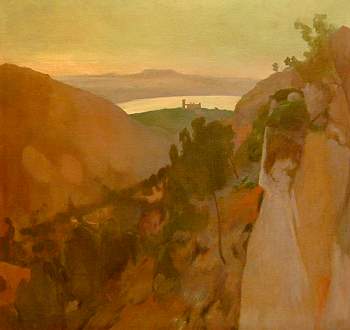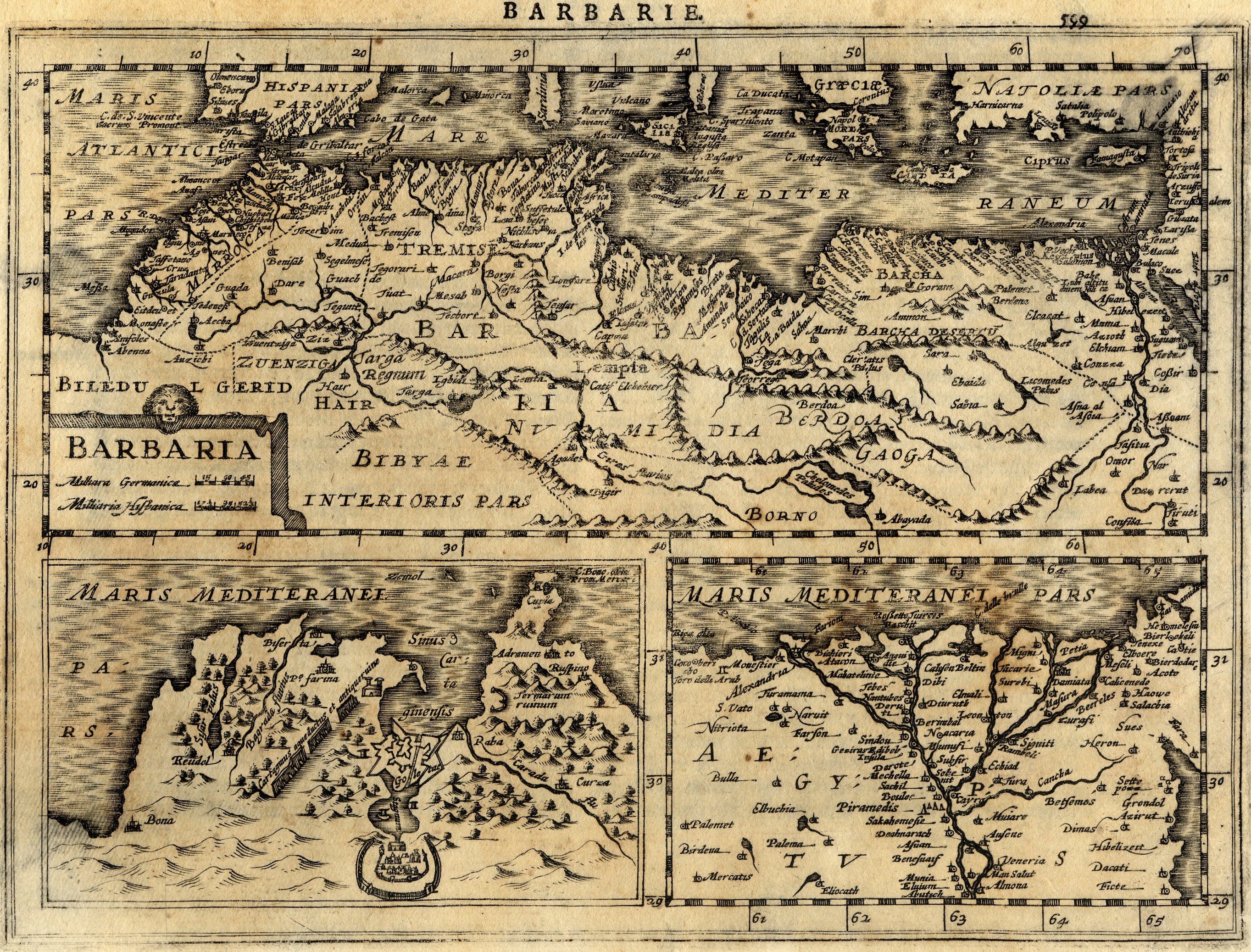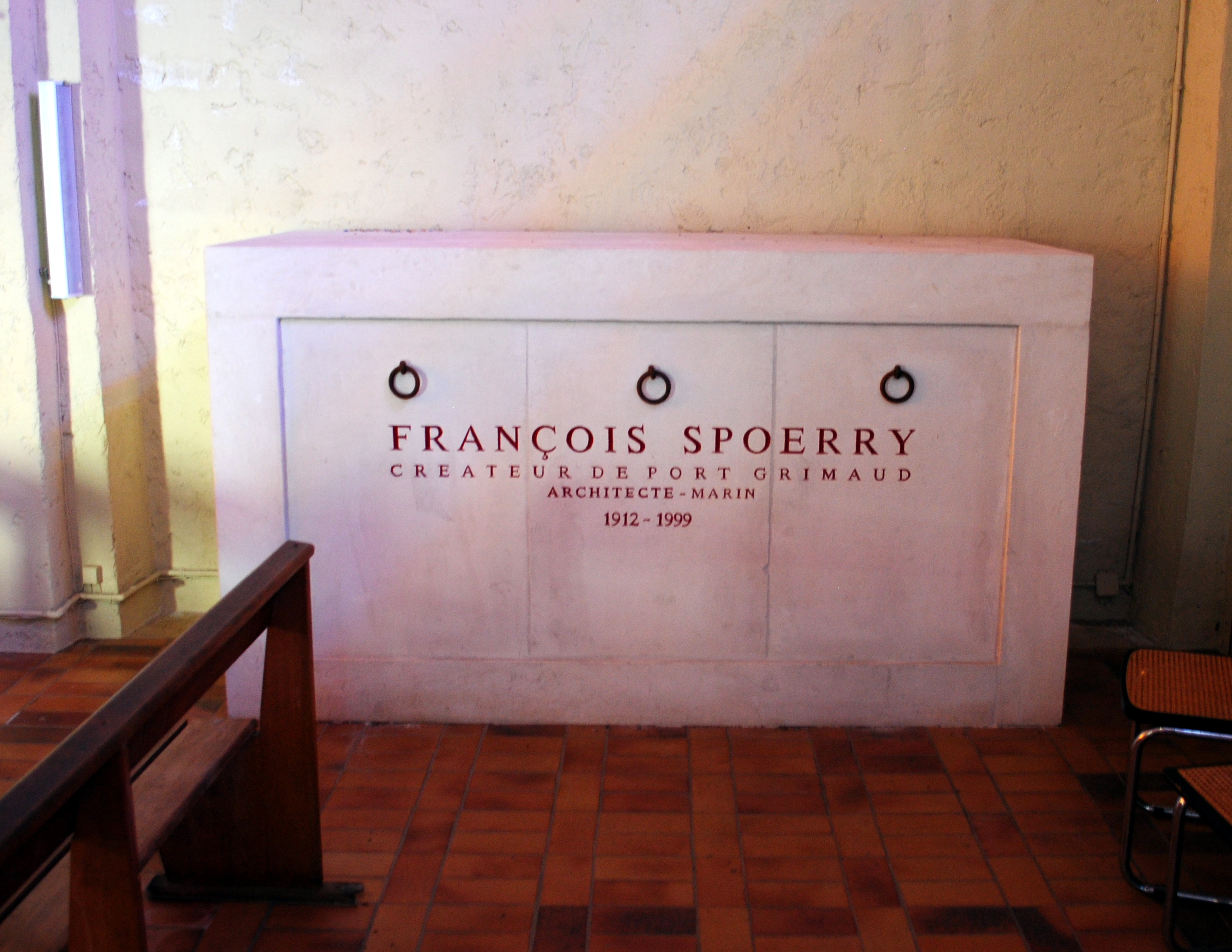|
Bendinat
Bendinat is a seaside village in the municipality of Calvià on the west coast of the island of Majorca, part of the Spanish autonomous community of the Balearic Islands. It is located at the foot of the Serra de Na Burguesa. Much of Bendinat is a residential area, and it is situated next to the town of Portals Nous. Its major thoroughfare is the county road C-719. The population is approximately 521. There are two main theories surrounding Bendinat's naming origin. An ethnological one is that after the 12 September 1229 battle for the conquest of Majorca, King James of Aragon, who was famished, came upon a tent with one of his lieutenants where a meal was being prepared. The host for that meal was Oliver de Termes, a Frenchman of Roussillon. After eating to their satisfaction, the king declared ''Ben dinat'' (Catalan: "well dined"). The other naming theory is geographical in context as in the 13th century, an old Islamic farmhouse in the area was named Bendinex. History Hist ... [...More Info...] [...Related Items...] OR: [Wikipedia] [Google] [Baidu] |
Calvià
Calvià () is a municipality on the island of Majorca, part of the Spanish autonomous community of the Balearic Islands. It is located in the southwestern part of the island of Majorca, between the Serra de Tramuntana and the Serra de Na Burguesa. The municipal seat is the town of Calvià Vila. Calvià has an approximate area of . It is bordered on the north by the municipalities of Puigpunyent and Estellencs, Palma de Mallorca (Palma), the island's capital to the east, Andratx to the west and to the south by the Mediterranean Sea. According to the 2008 census, the municipality had a population of 50,777 inhabitants, of whom 18,046 were foreigners. Today, it is the second most populated area of the entire archipelago Balearic after Palma, and also an area that has the largest number of tourists in the islands. Its population is scattered around the different urban centers created as a result of tourism development and twentieth century urbanization. The historical epic that ... [...More Info...] [...Related Items...] OR: [Wikipedia] [Google] [Baidu] |
Serra De Na Burguesa
Serra de Na Burguesa (Balearic , formerly Serra de Portopí or Sierra de Porto Pi, meaning "Port of Pine Mountain") is a well-defined mountain on the island of Majorca, part of the Spanish autonomous community of the Balearic Islands. It is the southernmost portion of the Serra de Tramuntana range, terminating in the Mediterranean Sea at Bay of Palma. Na Burguesa is located approximately halfway between Santa Ponsa and Palma. The municipality of Calvià is located between Na Burguesa and Serra de Tramuntana. History The mountain's name of Serra de Portopí predates the name Serra de Na Burguesa. Serra de Portopí gained historical significance in 1229 when King James II of Aragon crossed it with his troops, and regained Palma for Spain from the occupying Moors. In present day, Portopí refers to a neighborhood located in the district west of Palma de Mallorca. The later name, Serra de Na Burguesa, honors Francesc Burgués, the Solicitor-General of the Spanish Crown, wh ... [...More Info...] [...Related Items...] OR: [Wikipedia] [Google] [Baidu] |
Portals Nous
Portals Nous is a neighborhood in the municipality of Calvià on the island of Mallorca, part of the Spanish autonomous community of the Balearic Islands. It includes the residential neighborhood of Bendinat, and it is adjacent to El Toro to the west, La Porrassa the east, Son Ferrer north, and the sea to the south. It had its start in the 1930s, and now has a population of approximately 2,650 residents. The town is a meeting place for businessmen, celebrities, high society figures and members of the Spanish royal family during their summer stays in the Marivent Palace The Palace of Marivent (which in English means ''Palace of Sea and Wind'') is a modern palace built in the 1920s and located in the tourist area of Cala Mayor in Palma de Mallorca, Spain. Since the 1970s, this palace has been the summer residenc .... Festivals are celebrated from 12 to 15 August. The marina is called Puerto Portals. References Populated places in Calvià Neighbourhoods in Spain [...More Info...] [...Related Items...] OR: [Wikipedia] [Google] [Baidu] |
Conquest Of Majorca
The conquest of the island of Majorca on behalf of the Christian kingdoms was carried out by King James I of Aragon between 1229 and 1231. The pact to carry out the invasion, concluded between James I and the ecclesiastical and secular leaders, was ratified in Tarragona on 28 August 1229. It was open and promised conditions of parity for all who wished to participate. James I reached an agreement regarding the arrival of the Christian troops with a local chief in the Port de Pollença, but the strong mistral winds forced the king to divert to the southern part of the island. He landed at midnight on 10 September 1229, on the coast where there is now the tourist resort of Santa Ponsa, the population centre of the Calviá municipality. Although the city of Madina Mayurqa (now Palma de Mallorca) fell within the first year of the conquest, the Muslim resistance in the mountains lasted for three years. After the conquest, James I divided the land among the nobles who accompanie ... [...More Info...] [...Related Items...] OR: [Wikipedia] [Google] [Baidu] |
Pedro Caro, 3rd Marquis Of La Romana
Don Pedro Caro y Sureda, 3rd Marquis of La Romana (2 October 1761 – 23 January 1811) was a Spanish general of the Peninsular War. Biography Born at Palma de Mallorca to a family of Balearic nobility, Romana was educated in France and, upon the death of his father, was awarded a commission in the Spanish Royal Navy by King Charles III. He studied at the University of Salamanca and entered the ''Seminario de Nobles'' in Madrid. Like many Spanish officers of the Napoleonic era, Romana served in the American Revolutionary War in his youth. In 1783, he participated in the reconquest of Menorca from the British. In the final months of the war, he was assigned to the blockade of Gibraltar. Romana retired from the military after the war and began travelling Europe. Evidence suggests he was actually dispatched on missions of diplomacy or espionage, for which his knowledge of foreign languages would have been a valuable asset. In 1793, Romana entered the army as a cavalry colone ... [...More Info...] [...Related Items...] OR: [Wikipedia] [Google] [Baidu] |
François Spoerry
François Henry Spoerry (28 December 1912 – 11 January 1999) was a French architect, developer, and urban planner that created the seaside town of Port Grimaud. He was an Officier of the Légion d'honneur and an Officier of the Ordre des Arts et des Lettres. Early years He was born in Mulhouse to a large, industrious family that had moved from Switzerland to Mulhouse in 1848 to start up a textile business. The family had a holiday home at Partigon. His parents were Henry Spoerry (1879–1966) and Jeanne Schlumberger. Spoerry had three younger sisters: Anne-Marie, a physician, aviator and adventurer, Therese, and Martine. After finishing school, Spoerry studied architecture at the École des Beaux-Arts, Strasbourg in 1930. He became an assistant to Jacques Couëlle during the period of 1932 through 1934. He graduated from Marseille's École des Beaux-Arts in 1943 . During World War II, he used an architectural research project in Aix-en-Provence as a cover for working wit ... [...More Info...] [...Related Items...] OR: [Wikipedia] [Google] [Baidu] |
Joaquín María Bover I Roselló
Joaquín or Joaquin is a male given name, the Spanish version of Joachim. Given name * Joaquín (footballer, born 1956), Spanish football midfielder * Joaquín (footballer, born 1981), Spanish football winger * Joaquín (footballer, born 1982), Spanish football forward * Joaquín Almunia, Spanish politician * Joaquín Andújar, professional baseball player in the Houston Astros organization * Joaquín Arias, professional baseball player in the San Francisco Giants organization * Joaquín Balaguer, President of the Dominican Republic * Joaquín Belgrano, Argentine patriot * Joaquín Benoit, professional baseball player for the San Diego Padres * Joaquin Castro, American politician from San Antonio, Texas * Joaquín Cortés, Spanish flamenco dancer * Joaquín De Luz, Spanish New York City Ballet principal dancer * Joaquin Domagoso, Filipino actor and model * Joaquín "El Chapo" Guzmán, Mexican drug lord * Joaquín Hernández, Mexican footballer * Joaquín "Jack" García, Cuban-A ... [...More Info...] [...Related Items...] OR: [Wikipedia] [Google] [Baidu] |
Juan Carlos I Of Spain
Juan Carlos I (;, * ca, Joan Carles I, * gl, Xoán Carlos I, Juan Carlos Alfonso Víctor María de Borbón y Borbón-Dos Sicilias, born 5 January 1938) is a member of the Spanish royal family who reigned as King of Spain from 22 November 1975 until his abdication on 19 June 2014. In Spain, since his abdication, Juan Carlos has usually been referred to as the ('King Emeritus'). Juan Carlos is the grandson of Alfonso XIII, the last king of Spain before the abolition of the monarchy in 1931 and the subsequent declaration of the Second Spanish Republic. Juan Carlos was born in Rome during his family's exile. Francisco Franco took over the government of Spain after his victory in the Spanish Civil War in 1939, yet in 1947 Spain's status as a monarchy was affirmed and a law was passed allowing Franco to choose his successor. Juan Carlos's father, Infante Juan, Count of Barcelona, was the third son of King Alfonso XIII and assumed his claims to the throne after Alfonso di ... [...More Info...] [...Related Items...] OR: [Wikipedia] [Google] [Baidu] |
Gothic Architecture
Gothic architecture (or pointed architecture) is an architectural style that was prevalent in Europe from the late 12th to the 16th century, during the High and Late Middle Ages, surviving into the 17th and 18th centuries in some areas. It evolved from Romanesque architecture and was succeeded by Renaissance architecture. It originated in the Île-de-France and Picardy regions of northern France. The style at the time was sometimes known as ''opus Francigenum'' (lit. French work); the term ''Gothic'' was first applied contemptuously during the later Renaissance, by those ambitious to revive the architecture of classical antiquity. The defining design element of Gothic architecture is the pointed or ogival arch. The use of the pointed arch in turn led to the development of the pointed rib vault and flying buttresses, combined with elaborate tracery and stained glass windows. At the Abbey of Saint-Denis, near Paris, the choir was reconstructed between 1140 and 114 ... [...More Info...] [...Related Items...] OR: [Wikipedia] [Google] [Baidu] |
Central Europe
Central Europe is an area of Europe between Western Europe and Eastern Europe, based on a common historical, social and cultural identity. The Thirty Years' War (1618–1648) between Catholicism and Protestantism significantly shaped the area's history. The concept of "Central Europe" appeared in the 19th century. Central Europe comprised most of the territories of the Holy Roman Empire and those of the two neighboring kingdoms of Poland and Hungary. Hungary and parts of Poland were later part of the Habsburg monarchy, which also significantly shaped the history of Central Europe. Unlike their Western European (Portugal, Spain et al.) and Eastern European (Russia) counterparts, the Central European nations never had any notable colonies (either overseas or adjacent) due to their inland location and other factors. It has often been argued that one of the contributing causes of both World War I and World War II was Germany's lack of original overseas colonies. After ... [...More Info...] [...Related Items...] OR: [Wikipedia] [Google] [Baidu] |
Catalan Language
Catalan (; autonym: , ), known in the Valencian Community and Carche as '' Valencian'' ( autonym: ), is a Western Romance language. It is the official language of Andorra, and an official language of three autonomous communities in eastern Spain: Catalonia, the Valencian Community, and the Balearic Islands. It also has semi-official status in the Italian comune of Alghero. It is also spoken in the Pyrénées-Orientales department of France and in two further areas in eastern Spain: the eastern strip of Aragon and the Carche area in the Region of Murcia. The Catalan-speaking territories are often called the or "Catalan Countries". The language evolved from Vulgar Latin in the Middle Ages around the eastern Pyrenees. Nineteenth-century Spain saw a Catalan literary revival, culminating in the early 1900s. Etymology and pronunciation The word ''Catalan'' is derived from the territorial name of Catalonia, itself of disputed etymology. The main theory suggests ... [...More Info...] [...Related Items...] OR: [Wikipedia] [Google] [Baidu] |






_-_Fondo_Marín-Kutxa_Fototeka.jpg)
.jpg)
